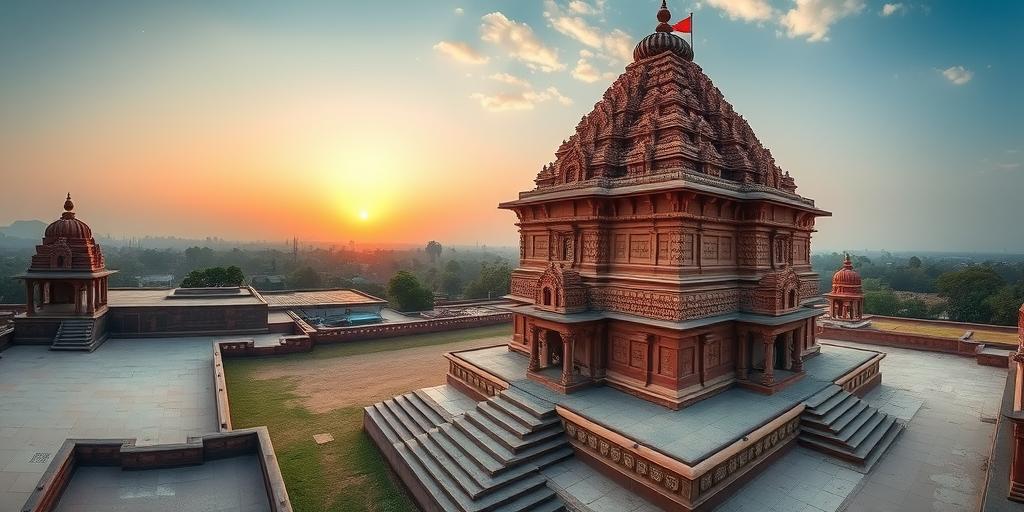India's architectural heritage is a testament to its rich and diverse history, reflecting the influences of various empires, cultures, and artistic traditions. Preserving this heritage is crucial for maintaining cultural identity, promoting tourism, and understanding the nation's past. This article explores the significance of architectural preservation in India, the challenges involved, and the strategies being implemented to safeguard these invaluable treasures.
The Significance of Architectural Heritage
Architectural heritage encompasses a wide array of structures, including:
- Ancient Temples: Exquisite examples of Dravidian and Nagara styles.
- Forts and Palaces: Majestic reminders of royal power and grandeur.
- Colonial Buildings: Imprints of European influence on Indian architecture.
- Stepwells: Intricate water management systems and architectural marvels.
- Tombs and Mausoleums: Reflecting the Mughal and Islamic architectural styles.
These structures are not merely historical artifacts; they are living embodiments of India's cultural, social, and economic history. They offer insights into the craftsmanship, engineering skills, and artistic sensibilities of past generations. Moreover, they contribute significantly to the tourism industry, attracting visitors from around the world and generating revenue for local communities.
Challenges in Preservation
Despite its importance, preserving India's architectural heritage faces numerous challenges:
- Urbanization and Development: Rapid urban growth often leads to the demolition or alteration of historical structures to make way for new construction.
- Lack of Awareness: Insufficient public awareness and appreciation for heritage can result in neglect and damage.
- Funding Constraints: Limited financial resources hinder conservation efforts and the implementation of preservation projects.
- Environmental Factors: Pollution, climate change, and natural disasters pose significant threats to the integrity of historical buildings.
- Encroachments and Illegal Activities: Encroachments on heritage sites and illegal construction activities can damage or destroy these structures.
Strategies for Preservation
To address these challenges, various strategies are being implemented by the government, organizations, and local communities:
- Legislative Framework: The Archaeological Survey of India (ASI) and state archaeology departments play a crucial role in identifying, protecting, and conserving historical monuments and archaeological sites. The Ancient Monuments and Archaeological Sites and Remains Act (1958) provides the legal framework for the protection of heritage sites.
- Conservation Projects: Numerous conservation projects are undertaken to restore and maintain historical buildings. These projects involve scientific methods of preservation, including structural repairs, chemical treatments, and environmental management.
- Public Awareness Campaigns: Awareness campaigns are conducted to educate the public about the importance of heritage preservation. These campaigns utilize various media channels, including print, television, and social media, to reach a wide audience.
- Community Involvement: Local communities are actively involved in the preservation process. Community-based tourism initiatives promote heritage conservation and provide economic benefits to local residents.
- Sustainable Tourism: Promoting sustainable tourism practices helps to minimize the negative impacts of tourism on heritage sites. This includes regulating tourist activities, managing waste, and promoting responsible behavior.
Notable Preservation Efforts
Several successful preservation projects highlight the effectiveness of these strategies:
- Restoration of Humayun's Tomb, Delhi: This project involved extensive conservation work, including the restoration of the tomb's gardens, water channels, and architectural features.
- Conservation of Ajanta and Ellora Caves, Maharashtra: These UNESCO World Heritage sites have undergone significant conservation efforts to protect their ancient paintings and sculptures from environmental damage.
- Preservation of the Stepwells of Gujarat: The stepwells of Gujarat, such as Rani ki Vav, have been restored to their former glory, showcasing the intricate engineering and artistic skills of past generations.
The Role of Technology
Technology plays an increasingly important role in heritage preservation. Advanced techniques, such as 3D scanning, digital documentation, and virtual reality, are used to create accurate records of historical structures and to facilitate their restoration. These technologies also enable virtual tours and online access to heritage sites, making them accessible to a global audience.
Conclusion
Preserving India's architectural heritage is essential for safeguarding its cultural identity, promoting tourism, and understanding its past. By implementing effective strategies, fostering public awareness, and leveraging technology, India can ensure that its architectural treasures are preserved for future generations. The collective efforts of the government, organizations, and local communities are vital in this endeavor, ensuring that India's rich heritage continues to inspire and enrich the world.









